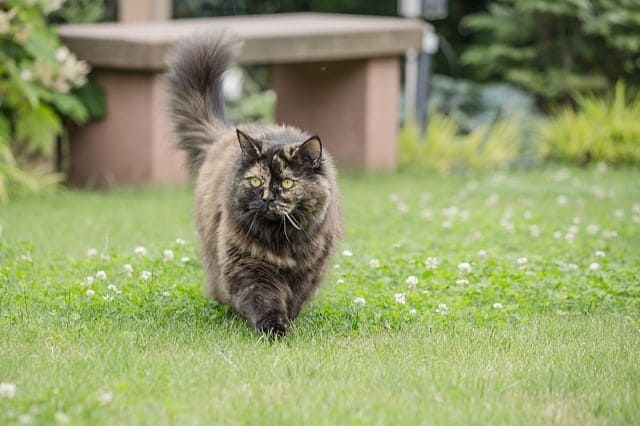To best protect the health of our British Longhair, it is important to know which common diseases it is predisposed to – here is a list.

The British Longhair is a basically strong and robust furry cat, which however risks developing some common diseases of the breed. Let’s see together what they are, how to recognize them promptly and what to do to make the life of our four-legged friend long and serene.
Common diseases of the British Longhair

The long-haired British is an incredibly long-lived cat. Just think, in fact, that the average life span of this breed is 18 years.
Healthy, these cats are not predisposed to the development of numerous diseases. An exception, however, are diseases of a hereditary nature or associated with the tendency of this feline to accumulate excess weight.
Hence, the importance of turning to a serious and reliable breeding, which can certify the optimal conditions of the four-legged friend that we are preparing to welcome into our life.
No less crucial, of course, is subjecting the cat to periodic veterinary checks, to check its health regularly. Among the common diseases of the British Longhair are:
- Polycystic kidney;
- Hypertrophic cardiomyopathy;
- Feline hepatic lipidosis.
Polycystic kidney
Polycystic kidney is one of the common diseases to which the British Longhair is most predisposed.
This genetic disorder involves the growth of cysts on the surface and inside of one or both of the cat’s kidneys.
During its early stages, the disease is asymptomatic due to the small size of the growths.
Over time, however, the growth of the cysts impairs liver function, causing the following symptoms to develop:
- Slimming;
- Nausea;
- Dehydration;
- Increased thirst;
- Increased frequency of urination;
- Halitosis.
Unfortunately, today this pathology is incurable. The only existing treatment is to try to slow the progression of the disease.
For this reason, prevention is essential: the advice is to carry out the genetic test on the cat, as well as periodically subject it to kidney ultrasound.
Hypertrophic cardiomyopathy
Just like in the case of the British Shorthair, hypertrophic cardiomyopathy is among the common diseases of the Longhair variant.
It is a hereditary disease that affects the heart. In particular, it involves a thickening of the ventricular wall and a reduction of the lumen.
As a result, the heart is able to collect less blood than normal, compromising the efficiency of blood circulation. Symptoms of hypertrophic cardiomyopathy in cats include:
- Lack of appetite
- Dyspnea;
- Heart murmur;
- Pulmonary edema.
To date, there is no cure for this disease. The practice focuses on prevention. In fact, it is very important to perform echocardiographic screening for all breeding cats, preventing mating to sick animals.
Feline hepatic lipidosis
Finally, feline liver lipidosis closes our list of common diseases in British Longhair.
Also known as fatty liver syndrome, this disease is a build up of fat cells within the animal’s liver. Their presence is capable of compromising the liver function of the cat.
How to tell if your British Longhair is suffering from hepatic lipidosis? Attention should be paid to the following symptoms:
- Nausea;
- Slimming;
- He retched;
- Hypersalivation;
- Dehydration;
- Anorexia.
It is essential to identify the disease quickly: in just two weeks, in fact, it can become irreversible. How to reduce the risk of fatty liver syndrome?
Among the main causes are obesity and dental problems. For this, it is essential to plan a healthy and balanced diet for the cat, as well as pay attention to its hygiene.






